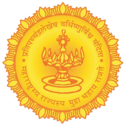President Kovind inaugurates Raj Bhavan’s Underground Bunker Museum
- Also lays the Foundation-stone of reconstruction of Governor’s Office-cum- Residence
The President of India Ram Nath Kovind inaugurated the underground Bunker Museum at Raj Bhavan, Mumbai on Sunday (18 Aug). Accompanied by Governor CH. Vidyasagar Rao, the President was shown around the exhibition and given an audio visual experience of the history of Raj Bhavan at a Virtual Reality booth.
Earlier, the President unveiled the foundation – stone for the proposed reconstruction of the Governor’s Office – cum – Residence building ‘Jal Bhushan’.
Smt Savita Kovind, Smt CH. Vinodha, Maharashtra Chief Minister Devendra Fadnavis, Minister for Revenue and Public Works Chandrakant Patil and Minister for Higher and Technical Education Vinod Tawde were present.
The thematic underground bunker museum spread over an area of 15000 sq.ft. will be opened for the general public through prior online booking later during the year.
The Bunker Museum has Virtual Reality Booths in which visitors can time travel to the 19th century, when the bunker was constructed to fire cannons at approaching enemy ships. History of Raj Bhavan has also been depicted in another section.
Backgrounder:
1. The Underground Bunker Museum
The underground British era bunker was discovered by Governor CH. Vidyasagar Rao in August 2016. Having remained closed for nearly six decades, the bunker had suffered extensive wear and tear due to seepage from the overhead lawn.
As the bunker is part of the history and heritage of Raj Bhavan and also because a part of it lies below the ‘Jal Bhushan’ the office and residence of Governor, there was a need to conserve the bunker in a way that it didn’t compromise the safety of the building and at the same time provided an opportunity to people to visit the historic site.
After conducting the structural audit of the bunker, the structural strengthening of the bunker was carried out. The works included water-proofing and grouting, electrification, air-conditioning and curation of the museum.
The bunker has 13 rooms of different sizes. It opens with a 20-ft tall majestic gate. Towards the entrance, the structure resembles a fort. When opened, the bunker had rooms bearing names such as Shell Store, Gun Shell, Cartridge Store, Shell Lift, Pump, Central Artillery Store, Workshop, etc. The entire underground bunker was found to have a proper drainage system and inlets for fresh air and light.
While taking up the Conservation works it was ensured that all the original features of the bunker are restored and also it is developed for adaptive reuse as a museum by incorporating virtual reality on the themes of Cannon-firing experience, history of Raj Bhavan and a glimpse of the forts of Maharashtra.
Dioramas of cannons and soldiers, optical illusions of a bunker of infinite length and cannons have also been created inside the museum.
2. Jal Bhushan
Jal Bhushan, the office and residence of the Governor of Maharashtra has a history of nearly 200 years. The present building has undergone several modifications and renovations.
Jal Bhushan, had been the official residence of the British Governors since 1885 when the ‘Government House’ shifted to the Malabar Point from Parel.
It has served as the residencde of Indian Governors after Independence and that of Governors of Maharashtra from the year 1960 when the State came into being. According to the history of the place, the edifice of ‘Jal Bhushan’ has evolved around the original ‘Pretty Cottage’ built by Governor Mountstuart Elphinstone around 1820.
Having completed its lifespan and pronounced structurally unsafe, the existing ‘Jal Bhushan’ building is set to be demolished and a New Jal Bhushan building is being built at the same site. The new building will retain many of the distinctive features of the existing heritage structure.
Apart from serving as the office and residence of the Governor, ‘Jal Bhushan’ also has a Conference Room, a Meeting Room, Library Room and offices of the ADC, Private Secretary and PRO to the Governor.



